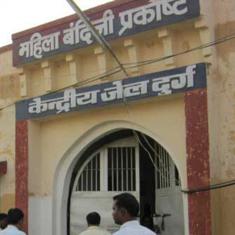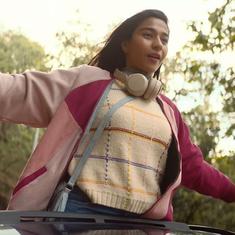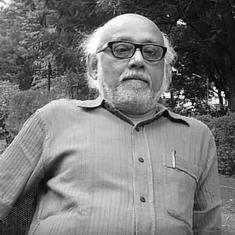Bengal has a long story to tell when it comes to comics, and cartoons – and finally there has been an attempt to trace the evolution of Bengali comics, with the Comics Culture Collective and the Kolkata Centre for Creativity coming together for an exhibition titled “Comics in Bengal”, containing material curated over a year and a half.
“There has never been an attempt to create a serious archive of Bengali comics,” said Pinaki De, one of the core members of Comics Culture Collective, “but this exhibition can be the first of its kind to make the younger generation work more on the history and politics of Bengali comics.” The exhibition was divided into several sections, so as to offer easy gateways into the world. The exhibits revealed how Bengali comics delved into different genres, and created a number of popular series that were widely read.
The Beginnings
When scholars talk about Bengali comics, the often point to works like terracotta panels and patachitras as forerunners. Be it “Kirkwood Bilaas” published in Basantak (1874) or “Harbola Bhar” in 1873 – these sequential narratives in art that were comic-like. It was Sukholota Rao’s series ‘Jemon Kormo Temni Phol’ (As you sow, so you shall reap), first published in the children’s magazine Sandesh in 1921, that is considered to be one of the first acknowledged comics in Bengali, complete with speech bubbles and other features typical of the format.
Rao also created “Ghumer Ghore”, which is considered to be a version of “Nemo in Slumberland” by Windsor McCay. Sukumar Ray, Hemadakanta Bandopadhyay and others also worked with similar formats for their stories, mostly in Sandesh magazine, which may have been the first Bengali magazine to publish comics consistently.

Rao may be a pioneer of Bengali comics, but the one who revolutionised this genre was Shaila Chakraborty. Once his “Khurer Keramoti” was published in 1935, a number of Bengali comics started coming up in contemporary Bengali magazines.
Jump to the 1940s and ’50s – the decades of great social upheaval – with the Bengal famine, World War II, and Independence. Though several artists did experiment with political comics, most of them did not really become popular. There was some political and environmental work, with Prafulla Chandra Lahiri playing a prominent role. His “Europer Saajghor” (The Dressing Room of Europe) transforms a figure from Mussolini to Hitler with just a few strokes to convey how most dictators are actually the same when it comes to their political intention.
One work that took the exhibition curators by surprise was by Arabinda Datta, published in Anandabazar Patrika – a comic strip entirely devoid of men, and making points about the conflict between progressive thought and regressive practices.

Humour
The funnies, naturally, dominated an entire era of Bengali comics. This, believes comics collectors like Debasish Gupta, was on reason political cartoons could not flourish. ‘But Bengali comics were mostly meant for juveniles now,’ said Gupta. ‘And even if some of them had political overtones, these were diluted because of editorial pressure.’ Still, the eponymous hero of “Bantul the Great”, created by Narayan Debnath, took part in both the wars against Pakistan, in 1965 and in 1971, even if only through the occasional story.
Among the other funnies that became very popular during the 1970s were “Handa Bhonda”, originally created by Pratul Bandopadhyay, and “Nonte Fonte”, originally created by Mayukh Chowdhury. Both were taken up later by Debnath, who built a a phenomenal franchise with them. According to Pinaki De, their successors are really less interesting as far as the humour goes, with only “Rappa Roy”, created by Sujog Bandopadhyay, bearing mention.



Adventure, Science Fiction, Crime, Horror
Many comics creators tried their hand at this genre, among them Pratul Bandopadhyay, Tushar Chatterjee, and Narayan Debnath, but the real star of the show was Mayukh Chowdhury aka Prasad Ray. His most famous work under this genre is “Agantuk” (still available in bookstores), which ran in serial form for two years. Without moving out of Calcutta, and with only limited resources available, did what others in Europe were doing at the time by creating serious sequential art.
His drawings had deep-inked shadows, and he wrote stories about, among other things, ancient India at the time of Alexander’s invasion. “Agantuk” (The Stranger), one of his stories from the 1970s, is about a Martian called Jura who has pointy ears and retractable claws like Wolverine’s, long before American comics artists thought of it. Surprisingly, there are no superhero comics in Bengal apart from “Brishchik” created by Juran Nath. Brishchik looks very much like Batman, but his adventures are set in Calcutta.

Kishor Bharati magazine played an important role in publishing both detective and horror comics. From Mayukh Chowdhury to Ajit Gupta and Tushar Chatterjee (who came up with the character of Nishith Roy), a number of artists worked in these genres. Subrata Gangopadhyay’s “Palabar Path Nei” even incorporated the Naxal movement.
History
Here, Kafi Kha and Shaila Chakraborty played primary roles. Piciel, aka Kafi Kha, created cartoons of famous political leaders like Mahatma Gandhi, Mohammad Ali Jinnah, Subhas Chandra Bose. One famous example is the one that was published the morning after Gandhi’s assassination, capturing the reactions of various groups around the body.
Shaila Chakraborty presented a history of the revolutionary freedom movement in Bengal, in thestyle of an adventure story. He also wrote and drew, in real time, “Puber Akaash Laal” (The Eastern Sky is Red), based on the 1971 Bangladesh Liberation War.

Adaptations
Many popular Bengali literary works were adapted into comics, with the first big hit being Bankimchandra Chattopadhyay’s “DurgeshNandini”, and “Debi Choudhurani”, both by Narayan Debnath, Later, cartoonists like Harshamohan Chattoraj, Onkarnath, and others started adapting beloved Bengali stories featuring characters like Tenida, Sadashib, Feluda, and Ghanada. Among current adaptations, Sambaran Das’s version of Bibhutibhushan Bandyopadhyay’s “Taranath Tantrik” is a sharply experimental one.

Biographies and Mythology
Bengali comics were not replete with examples in these categories. There was Kafi Kha’s “Robir Abirbhaab” to observe Rabindranath Tagore’s centenary, Mayukh Chowdhury’s biocomic on Ishwar Chandra Vidyasagar, and a few other scattered works, prominent among them being Archana Aich’s biography of Indira Gandhi.

As mythology goes, there were Purnachandra Chakraborty’s “Chobite Ramayan” and “Chobite Mahabharata”, which continue to attract readers.

Experimental Works
A striking example in this category is ‘Carbon Kotha’ (2010) by Sarbajit Sen, which is considered to be the first proper comic on climate politics. It is also true that the focus of experimental work, even by Bengali comic artists, have shifted to English to reach a wider audience.

Translations
Many believe Nirendranath Chakraborty’s translation of the Tintin comics to Bengali was responsible for a decline of sorts in Bengali comics, since reader attention shifted to them. With “Aranyadeb” (Phantom) before that and the Asterix following, it got difficult to keep with these highly popular translated works.
The exhibition mounted by Comics Culture Collective demonstrated that creating an archive of Bengali comics is indeed possible. There is a wealth of cultural, literary, and social history, not to mention art and creativity, contained in these diverse works. For a language already resplendent with fine literatures, the addition of this genre can only enrich the repository further.











